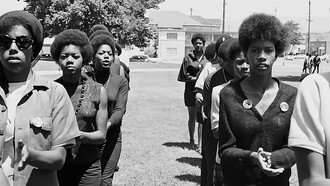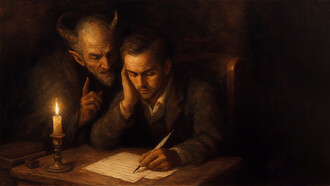In 1997, Anette Sørensen was meeting her daughter’s father in New York. The couple decided to go out to eat and did not think twice about parking the stroller with 1-year-old Liv outside in front of the restaurant. If you know anything about the US, it probably sounds like this woman lost her mind.
Sørensen said that she regularly checked on the stroller during the meal – that is, up until the police was called by concerned Americans. She was arrested, and her daughter ended up in foster care for a while.
In 1997, my parents lived just outside of Copenhagen. They often went on walks with me, less than 1-years old, in a stroller. If they wanted to go for a bite at the local café, they’d park me in front, just like Sørensen did, turn on the monitor and head inside. My parents were never arrested.
Culture
If it wasn’t clear, both me and Anette Sørensen are Danish, which means we were both told that “sleeping outside is healthy for kids”. This is a very common practice in Denmark: babies usually sleep in strollers, either on the terrace or some sort of balcony. The nursery I used to work in had prams outside for the youngest, and cribs inside for those older than 2. Some apartment complexes have little, shared gardens / courtyards where you may find strollers with sleeping babies. If you look up, you can see Mommy and Daddy watching from the windows.
And yes, this is a year-round thing; my mom would wrap me in sweaters and blankets, I had little gloves and a hood specifically for winter-naps. The idea is that continuous exposure to fresh air and daylight improves the baby’s immune system, so Nordic families do what they can to preemptively make their little Vikings strong. Additionally, the cool air is reported to have a calming effect, causing deeper and better sleep; and, obviously, every parent’s dream is for little Hamlet to sleep as long as possible because, at least then, he‘s not crying.
Is it safe to sleep in a stroller?
What if the baby attempts a “Mission Impossible” and escapes?
As someone who was once a restless and sleepless baby, this is one of my earliest memories:
I had popped my little arms over the duvet and tried to push the safety cover off, but of course, it was too tight. I made grabby hands with my sausage fingers at the harness that was fastened around my shoulders and waist, but to no avail. I tried to wiggle up and down to somehow loosen it, but, as expected, that didn’t work either. In my frustration, I started kicking my feet as hard as I could. I kicked at the bottom of the safety cover, and to my delight, it loosened. I stuck my bare feet over the edge of the pram, feeling the spring breeze on my chubby toes, and then…. I was swiftly stopped as a hand grabbed my foot and a face with furrowed brows appeared above me: I had been caught. Again.
All this to say: no, it’s not easy to escape, and even the brave babies who try are usually calmed and put back to sleep.
Is it safe to sleep outside?
Another common question I’ve heard is: aren’t you scared of kidnappers? I can absolutely see where this concern comes from, but I think it comes down to your own frame of reference.
I don’t think you’ll ever convince a Dane that letting your kid sleep on the terrace is dangerous. Nordics have a general level of trust in society – a sort of “if you don’t bother me, I won’t bother you” way of thinking. That includes things like not sitting next to strangers on the bus if you can avoid it, and not wandering onto other people’s property uninvited.
Of course, that way of thinking can’t stop criminals, and maniacs exist regardless of culture and nationality; however, kidnappings in Denmark are incredibly rare. Upon research, it seems there has been a handful in the past decades, some of which were mix-ups where thieves became kidnappers upon stealing fancy strollers without first checking for babies. Ups.
The question “why even risk it if there is a chance” is a bit tricky, though, because it’s not considered a risk. In Denmark, the most dangerous animal you’ll meet is the viper, and they don’t come into the towns, nor do they slither into strollers to bite babies.
In terms of general safety, we do have crime of course, but Copenhagen consistently ranks high in terms of safety, along with Tokyo, Singapore and Stockholm.
Common sense
When I read articles about Sørensen’s arrest and people’s reaction to it, there’s one thing that often seems to be glossed over: she didn’t leave her baby “unattended”.
The restaurant they went to had a fenced-off outdoor area, and there was a window looking out onto the street. This is where Sørensen parked the stroller. Similarly, I don’t know anyone in Denmark who would leave their kid anywhere without line-of-sight.
In my grandparents’ time, you would see unattended strollers left outside shops, malls and cafés – perhaps a product of a society that trusted too much. This was common back in the day, just as it used to be common to smoke indoors, hit kids in school and shun people for being LGTBQ+. Society changes and learns.
In the 60s, as cases concerning stolen babies hit the press, mothers got more and more cautious with where they “left” their strollers. Especially after the case of baby “Basse”; a 3-month-old who was taken in ’66 while his mother shopped for baby clothing. He was never found despite the intense investigation.
This case particularly was always on my mother’s mind when she took me out in the stroller, and she, as well as many Danish mothers of the 90s, refused to let their strollers out of sight. If you take Hamlet in the stroller and suddenly get hungry, there must be a window you can sit by; otherwise, you’ll see parents just bringing the prams and strollers inside.
Trust in home
So, how could Anette Sørensen ever think of leaving baby Liv outside? For the same simple reason that my mother would me: she felt safe.
She had lived in New York for 3 years and felt safe in the area; this was her second home. Although I might sit back today and think that perhaps she trusted a bit too much in a city notorious for pickpockets and homelessness, I might’ve thought differently had I been a mother in 1997. When I asked my mom whether she might’ve done the same, she said “in 1997, if I felt safe, probably. Today, I don’t think so”.
Coming from a small country with a culture built around mutual trust and the infamous “hygge”, perhaps Sørensen did trust a bit too much in her second home, but that doesn’t make her a bad mother. Perhaps she was naïve, but surely no less of a mother than mine.
Bibliography
Jørgensen, S. 2018. "Baby kidnappet i Odense: Uopklaret mystisk sag genåbnes efter 50 år" from TV FYN (article in Danish).
Martela, F., Greve, B., Rothstein, B., and Saari, J. 2020. “The Nordic Exceptionalism: What Explains Why the Nordic Countries Are Constantly Among the Happiest in the World” from World Happiness Report 2020 chapter 7.
Ortiz-Ospina, E., and Roser, M. ND. “Trust” from Our World in Data.
Sonne, Louise M. 2014. "Fængslet for at efterlade sin baby i barnevogn" from ALT. Vores Børn. Article in Danish.
Tourula, M., Isola, A., Hassi, J. “Children sleeping outdoors in winter: parents' experiences of a culturally bound childcare practice”. Int J Circumpolar Health.
Laneri, R. 2017. "I went to jail for leaving my baby outside a restaurant" from New York Post.















